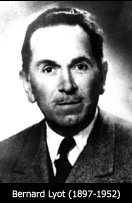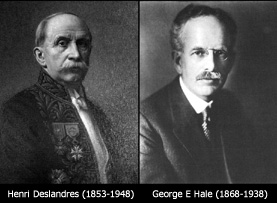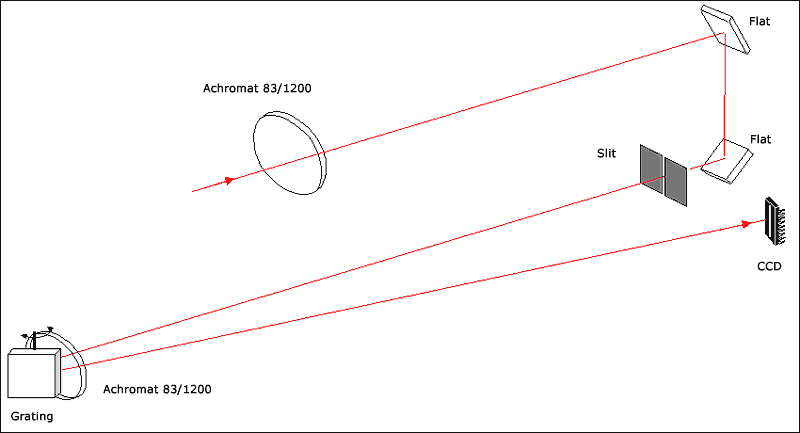
- Theoretical Elements
- SHG with a 115/900
- SHG with 90/1300 refractor (p.1
 )
) - SHG with 90/1300 refractor (p.2
 )
) - Newton 192/950
- Dobson 80/400 'Babydob'
- Ultra-simple solar spectrum
- Misc. electronic layouts
- Misc. optical layouts
- Untransversaliumisator software
- Processing videos software
- "PUSH TO" DIY system

- Radio control RA, Dec & focus

- Focuser 3D pour Vixen 150/750

- Year :
- Synoptic maps :
- Videos
- Maunder's Diagram
- Cycle 23 in images
- Venus Transit 2004
| Spectroheliography with linear CCD
| ||||
|
Introduction What amateur astronomer did not dream to see solar flares or impressive prominences standing out the solar limb?
Concept is simple: Recording the linear image of the Sun bounded by the entrance slit of the spectrograph at the wanted wavelength, and cycling this process until the whole disk be scanned. Final image of the solar disk will be reconstituted by juxtaposition of all the linear records. Originally, the photographic plate was at the time the means to record and to display a spectrohéliogram. This had for consequence the necessity of complex, cumbersome and heavy mechanisms for the realization of a spectroheliograph. Typically, An "old" is equipped with an entrance slit of the monochromateur scanning the solar disk and an exit slit scanning the film in a synchronous way and acting as shutter. The dissociation of the means of recording and display (that we will nammed in a generic way "synthesizer") allows to considerably simplify the structure of the instrument, and to make it completely static during the capture of the images. In this case, the acquisition is done by a CCD sensor, the collected information is stored in the memory of a microcomputer and the synthesis of the image appear on a screen or, for example, on a paper via a printer.
| ||||
|
A spectrohéliograph with linear CCD
| ||||
Capture and image synthesis
| ||||
Visual version : le spectrohélioscope
|
||||
|
It is possible to realize a version intended for the visual observation. We use rotating or vibrating slits to scan the solar disk and isolate the monochromatic lines. It is the retinal persistence which is the key of the synthesis of the image. The realization is delicate but completely accessible for a motivated amateur. To learn more about the spectrohelioscope (SHS), I advise you to have a look attentive on the online document of the pioneer of the subject - Fredrick Veio - and that you can download here (4.2 Mo).
| ||||
Few optical layouts of spectrohelioscopes | ||||
Primary solar image is provided by an achromat which focal length is one meter at least and with F/D ratio is rather high (10 or more). It is necessary to consider residual chromatic aberrations and build a focuser to adjust the image of the Sun on the slit for red light (H-alpha) as well as violet light (Ca-K). This arrangement does not give a lot of aberrations (mainly sphericity). Primary beam is folded by 2 flat mirrors to get a short instrument.
This assembly is simplified by the use of a very short telescope which makes useless the flat mirrors (for folded beam). But, the risk - if the secondary mirror of the telescope is stuck on the meniscus - is to see the adhesive melting or softening under the effect of heat. Better is to carry out the test with an old telecope !. Aberrations of astigmatism are to be envisaged with this monochromator if mirrors have short f.l.
Primary solar image is provided by an achromat which focal length is one meter at least and with F/D ratio is rather high (10 or more). It is necessary to consider residual chromatic aberrations and build a focuser to adjust the image of the Sun on the slit for red light (H-alpha) as well as violet light (Ca-K). This assembly finds its simplification in the monochromator where there is only one lens serving at the same time as collimating and camera (autocollimator). Its focal length should be long and a simple meniscus could make the deal. One will take care to minimize the angle between slit and sensor. Linear sensor can be placed in the vicinity and in the prolongation of the slit.
|
||||
 |
||||




